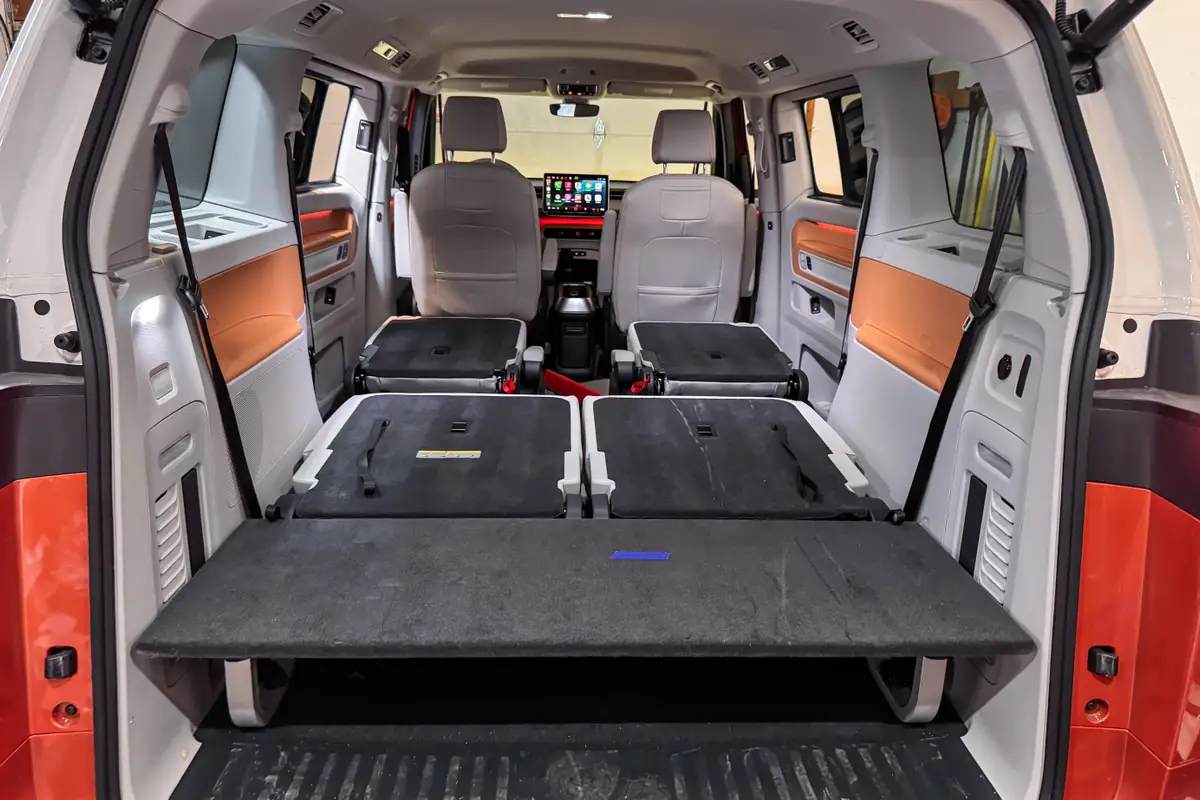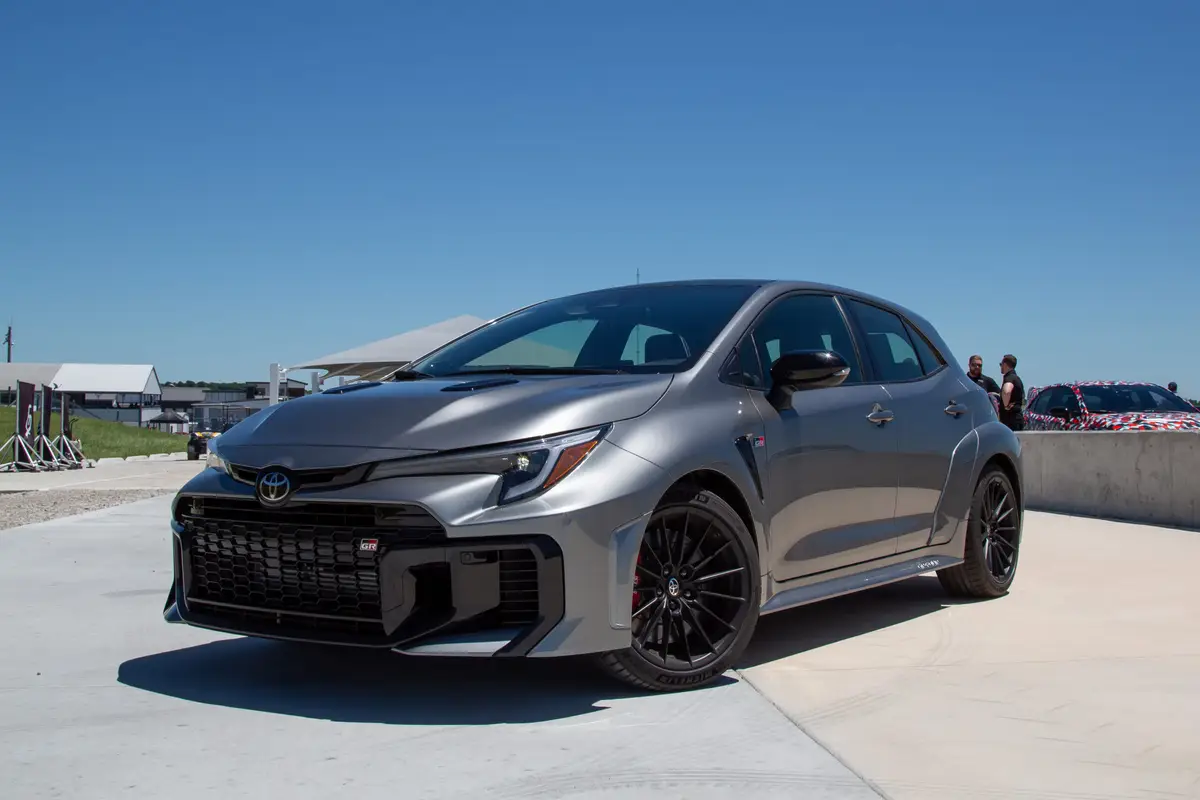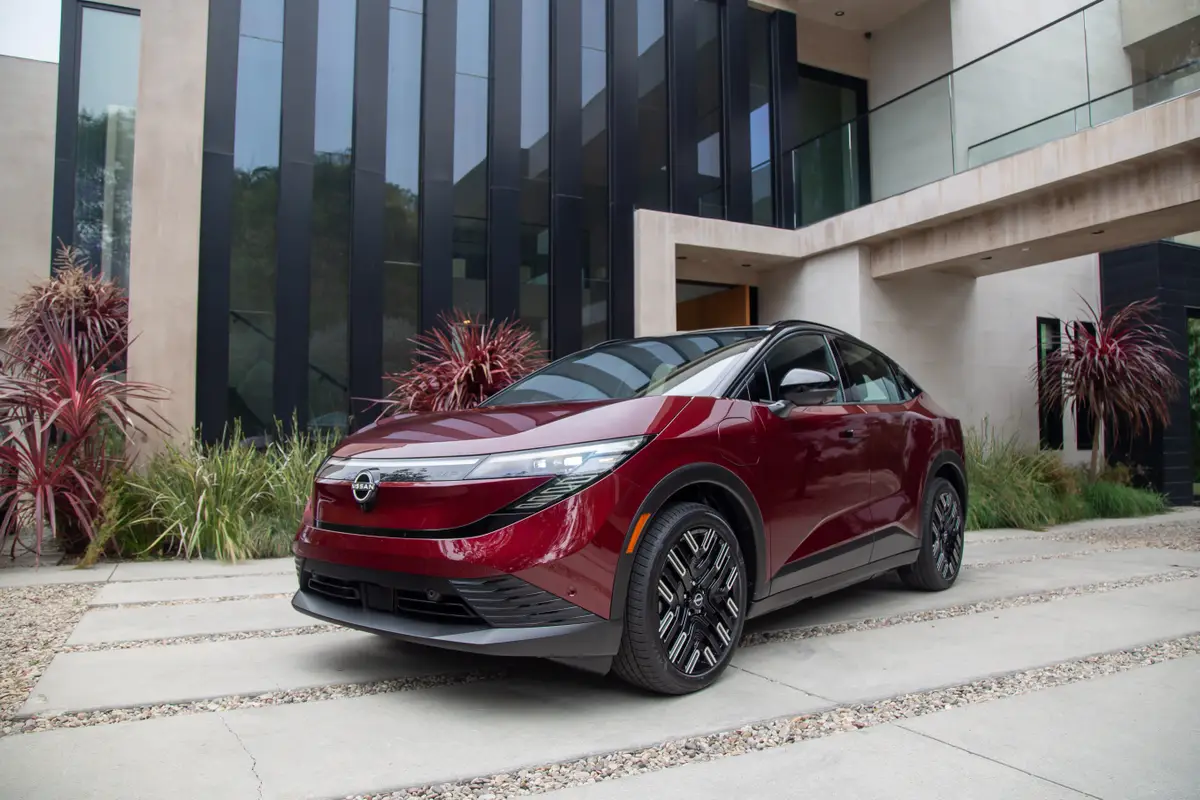How Do Car Seats Fit in a 2024 Genesis G70?

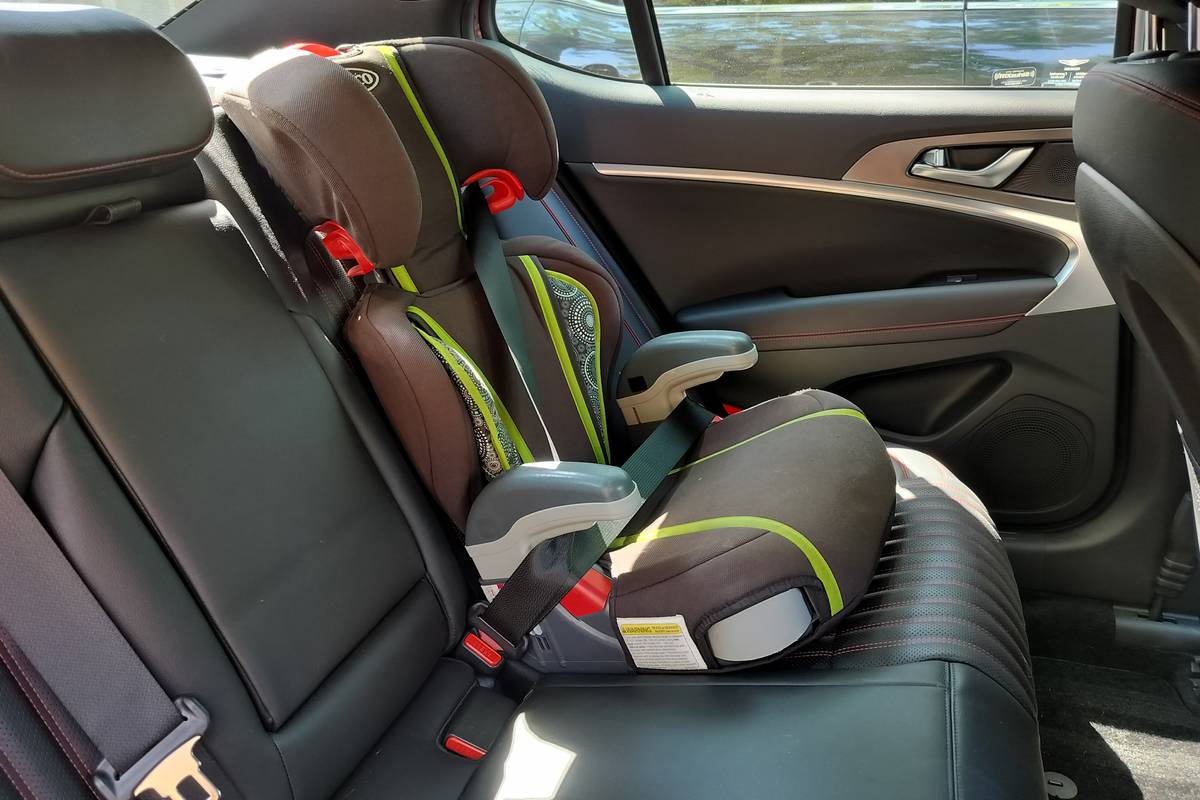
The verdict: The Genesis G70 compact sports sedan got a new engine and a control update for 2024. In the back, space for car seats is just so-so, especially when it comes to fitting legroom-hogging rear-facing car seats.
Does it fit three car seats? No.
Take a look at how the Latch system and each car seat scored below in our Car Seat Check of the 2024 Genesis G70.
Related: Search Car Seat Checks
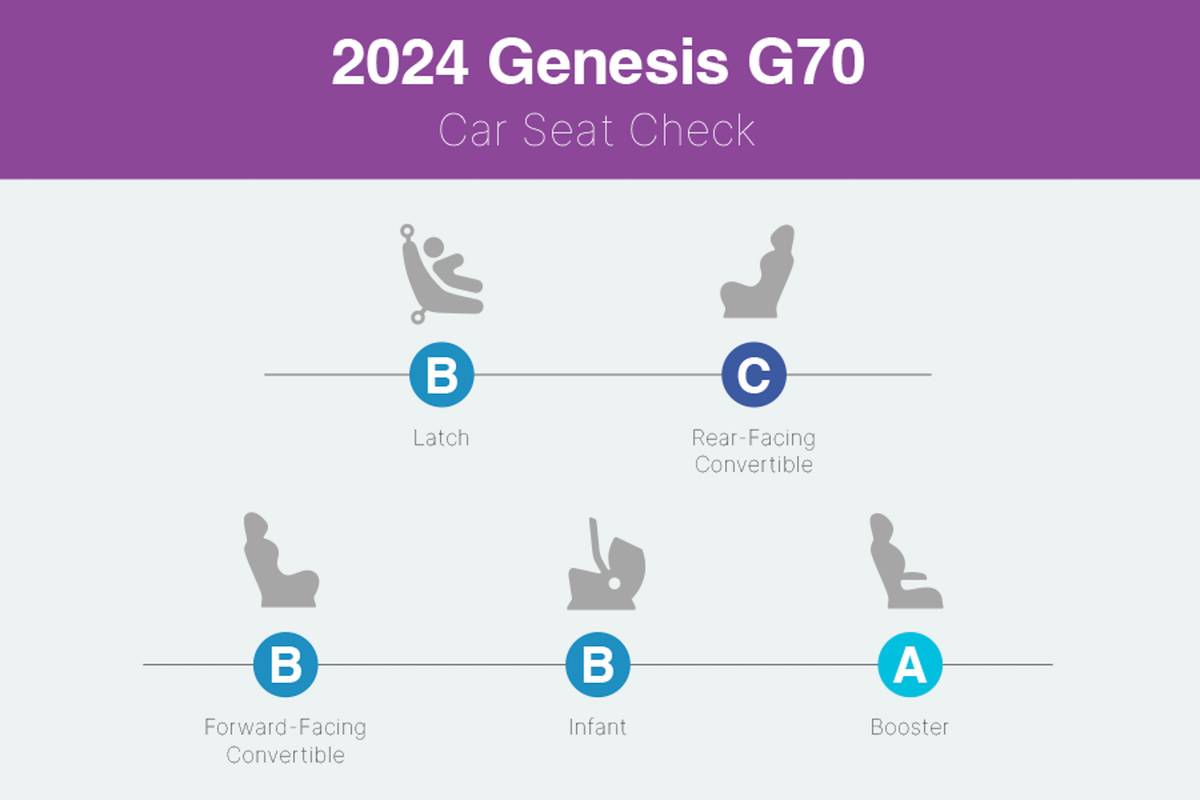
Latch: Grade B
The sedan’s two sets of anchors sit under hinged plastic covers. They’re easy to find and connect to, but they’re difficult to use during disconnection because there’s not a lot of room to maneuver around them. I had no trouble with the infant seat’s chunky connectors, but with the convertible’s skinny connectors, I struggled to disconnect. Three sets of top tether anchors sit on the rear shelf; they’re well marked and have plenty of clearance for easy connection.
Infant Seat: Grade B
Installing this seat was easy. We moved the front passenger seat up a bit to get enough clearance, so legroom was a little cramped for our 5-foot-6-inch front passenger with the seat installed behind it.
Rear-Facing Convertible: Grade C
Again, this seat installed easily, but it slightly compromised front-passenger legroom. We also struggled to disconnect it from the lower anchors because of the anchors’ placement under the hinged covers.
Forward-Facing Convertible: Grade B
After raising the head restraint, this car seat fit well. While we had no trouble connecting to the top tether anchor, again, disconnecting from the lower anchors required some contortions due to their placement.
Booster: Grade A
We removed the head restraint to situate the booster flush against the seatback. The outboard buckles are short but stable, which should make them easy for kids to grasp and use.
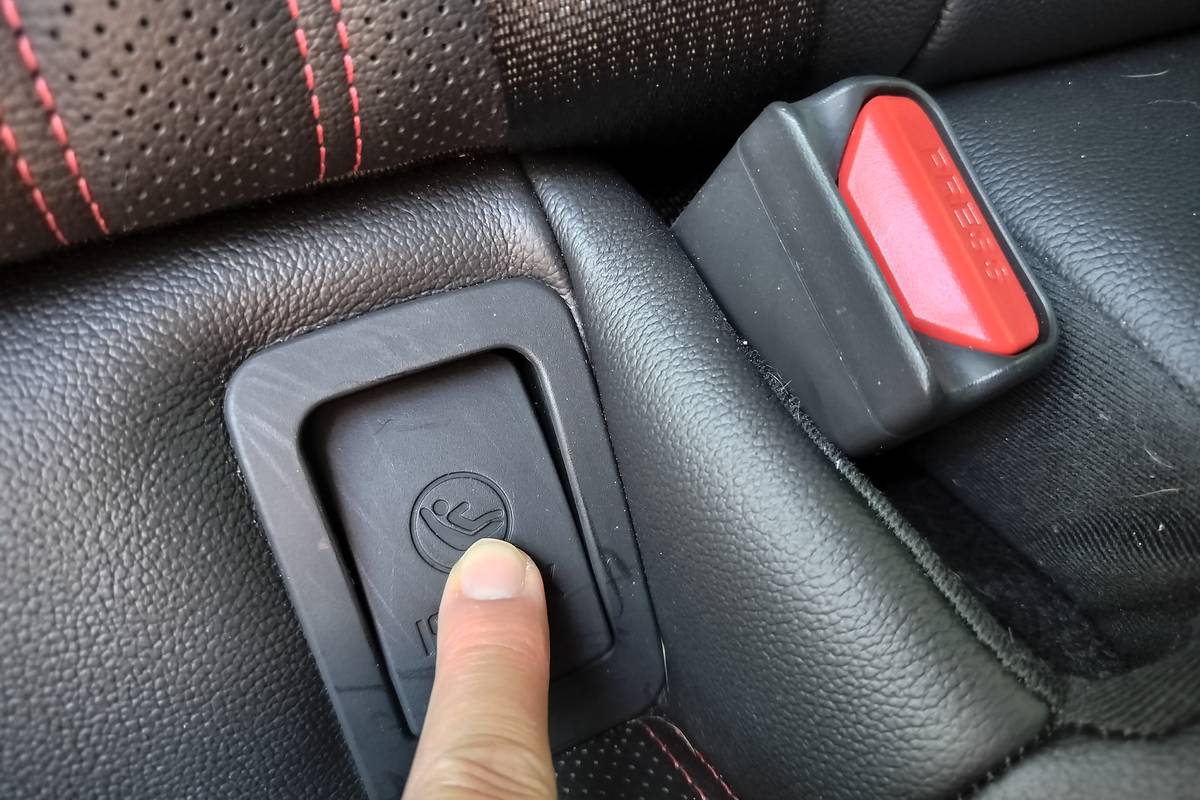
Grading Scale
A: Plenty of room for the car seat and the child; doesn’t impact driver or front-passenger legroom. Easy to find and connect to Latch and tether anchors. No fit issues involving head restraint or seat contouring. Easy access to the third row.
B: One room, fit or connection issue. Some problems accessing the third row when available.
C: Marginal room plus one fit or connection issue. Difficult to access the third row when available.
D: Insufficient room, plus multiple fit or connection issues.
F: Does not fit or is unsafe.
About Cars.com’s Car Seat Checks
Editors Jennifer Geiger and Jennifer Newman are certified child safety seat installation technicians.
For the Car Seat Check, we use a Chicco KeyFit 30 infant-safety seat, a Graco Contender 65 convertible seat and Graco TurboBooster seat. The front seats are adjusted for a 6-foot driver and a shorter passenger. The three child seats are installed in the second row. The booster seat sits behind the driver’s seat, and the infant and convertible seats are installed behind the front passenger seat.
We also install the forward-facing convertible in the second row’s middle seat with the booster and infant seat in the outboard seats to see if three car seats will fit; a child sitting in the booster seat must be able to reach the seat belt buckle. If there’s a third row, we install the booster seat and a forward-facing convertible. Learn more about how we conduct our Car Seat Checks.
Parents should also remember that they can use the Latch system or a seat belt to install a car seat, and that Latch anchors have a weight limit of 65 pounds, including the weight of the child and the weight of the seat itself.
Cars.com’s Editorial department is your source for automotive news and reviews. In line with Cars.com’s long-standing ethics policy, editors and reviewers don’t accept gifts or free trips from automakers. The Editorial department is independent of Cars.com’s advertising, sales and sponsored content departments.

News Editor Jennifer Geiger joined the automotive industry in 2003, much to the delight of her Corvette-obsessed dad. Jennifer is an expert reviewer, certified car-seat technician and mom of three. She wears a lot of hats — many of them while driving a minivan.
Featured stories
